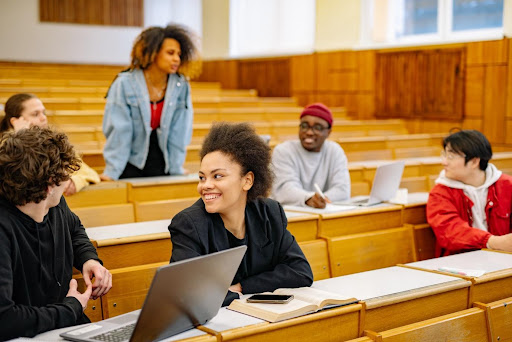Teaching art and creativity is a responsible and challenging task, no matter how fun it sounds. The teacher’s main job is to engage students and help them reach their maximum potential fully. But, with this subject matter being so undefined and wide, you can’t rely on conventional teaching methods. This is why teachers choose various unusual methods to teach art and creativity.
Statistics show that 65% of people retain information the best with the help of visual learning aids. This is why Disney animated movies are a great teaching tool. They can help the teachers bring the lesson to life and teach using practical examples. Not to mention students love learning through these beautiful animations.
Below, we’ll break down the different strategies for using Disney animation to teach art and creativity.
source: Pexels
-
Prepare Before Viewing
First things first, you and your students need to have a pre-viewing discussion. You don’t want them to be carried away by the plot and story and miss out on the important details you’ll be discussing later.
So, after choosing the right movie, talk to the students about what aspects of the movie you’ll be paying attention to. Break it down into bullet points or create handouts to make sure everyone knows their assignment. WritingUniverse.com can help you with written class materials if you feel this isn’t your strongest side.
-
Compare & Contrast
You can’t teach everything you want from just one Disney movie. And it would take you a lot of time to watch several of them, beginning to end.
So, you should go for a compare and contrast strategy to learn as much as possible. That implies:
- choosing the best scenes from several movies
- analyzing one aspect or artistic element in every scene
- discussing how they’re different and how the artists achieved this
The comparison will give students a lot of materials to process as well as examples to conclude from. It’ll also teach them to dig deeper into the decisions and meaning hidden behind the choices an artist makes.
-
Explore the Mood
Emotions and art are tied together closely. How we feel while enjoying any form of art is an important factor to be discussed in terms of learning.
Ask the students to connect with their emotions while watching the materials. The mood of the movies will impact what their emotions are, so make sure to cover that.
- What is the mood set in each example?
- How did the artist achieve this effect?
- What are the most important elements that made you feel the way you did?
Ask these and similar questions to teach them about the importance of connecting with the audience through specific artistic elements.
-
Critical Analysis
Understanding other people’s artistic choices and decisions is important for growing as an artist too. Learning to critically assess someone else’s work and think about why they did it the way they did can bring the best out of you.
Teachers can start a discussion about a selected Disney movie and see what students think about it:
- the dominant colors in the movie
- the symbolism behind the visual representation of certain characters
- hidden messages shown through simple details
Get them to express their opinion and even share what they would’ve done differently. Allow them to raise questions as well and share their interpretations with others.
This will be a great way to enhance critical thinking. And who knows, maybe you inspire them to apply for the Disney college program and choose this as a career path.
-
Final Thoughts
Disney animated movies are a brilliant resource for teaching art and creativity. It allows the teacher to go beyond the typical lesson plan and incorporate audio and visual elements into their teaching method. The students will love learning this way, which will make them more engaged and active in class.
We hope this was inspiring enough for you to start using Disney animation to teach art and creativity. Start developing your plan on how to do it best using the tips we’ve shared above.






